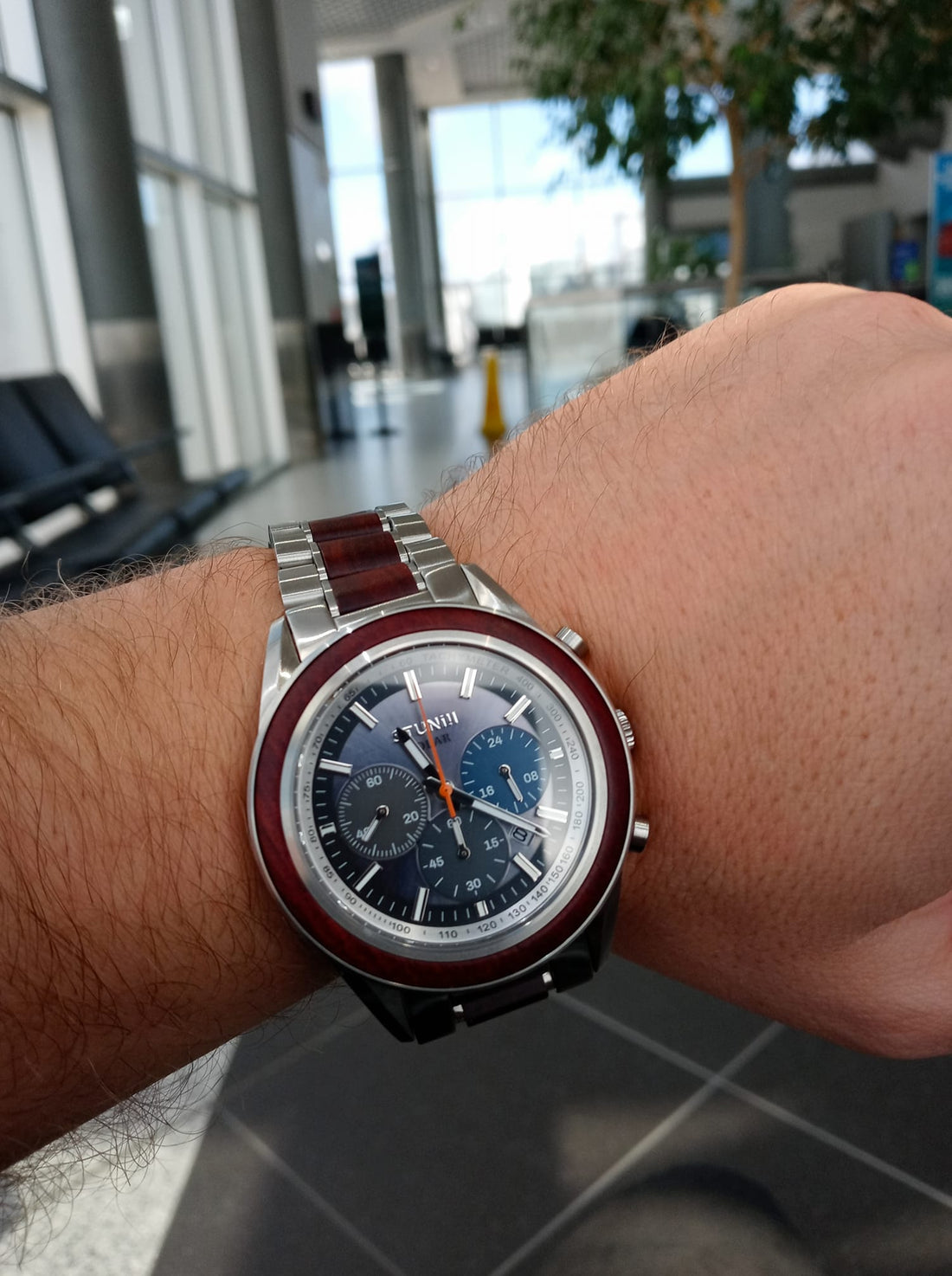
Interesting Facts About Wristwatches
Share

There’s no doubt that watches will retain their importance in our history. The keeping of time signifies humankind’s evolution from the middle ages. As society advanced, being punctual became important, which can be understood by the fact that it played a part in getting employed. Before the golden age of technological advancements, there was no concept of wristwatches because people use to follow the sun.
Now, everything revolves around time, especially due to globalization and businesses that span many countries. Keeping up with daily tasks has become possible due to wristwatches and our ability to see time with the one turn of our wrists. Wristwatches themselves have gone through an evolution and have a long history and some interesting facts.
If you are interested in learning about past events or are a fan of wristwatches, you will be thrilled to read our facts on wristwatches. The information you will find below may or may not be known by many people. So, it’s your time to shine and know every interesting fact about wristwatches.
Interesting Facts on Wristwatches
If you are reading this post, there is a strong chance you are deeply interested in wristwatches and want to further your knowledge on the subject. So, let’s explore some interesting facts about wristwatches.
1. Swiss Watches Were Made to Be Budget-Friendly
Most of us know Switzerland as the home to some of the best wristwatch-making companies in the world. However, Swiss watches have an interesting beginning that is at odds with their current reputation. Before the 19th century, Britain and France were the world’s capital in technology and innovation.
These two nations designed some of the best wristwatches in the world, and people couldn’t get enough of them. The demand for British and French wristwatches overtook its supply. Watch manufacturers from both countries were thriving but also challenged by the demand surge. Eventually, their prices also went up.
At one point, French and British-manufactured wristwatches become too expensive for the average consumer. However, the demand remained at the same level, leaving a vacuum to be filled by counterfeiters. Hence, the market became replete with fakes.
Contrary to popular belief, the fake watches weren’t coming from China. These wristwatches were coming from somewhere closer – Switzerland. During the bitter winter in the foothills of the Alps, tending the land and rearing livestock became impossible.
The farmers had to find a way to feed their families, and they resorted to making wristwatch components based on the designs. The Alp farmers quickly gained experience in designing wristwatches, and it wasn’t long before they improved their wristwatch quality.
Soon, the industrial revolution took over Britain and France, and the wristwatch industry was crippled. The Swiss took advantage of this market change and established a renowned brand we know as “Swiss watches.”
2. Omega Was the Name of a Movement
Many wristwatch companies started with a different name than what they currently use. For example, Patek Philippe was known as Patek, Czapek & Cie. Until Czapek left and Philippe joined. Patek Philippe isn’t the only company that had a name change. Several other wristwatch manufacturing companies have radically changed their names in the past.

_____________________________________________________________________________________________________________________________________________________________________________________________
One of the prime examples of rebranding and name changing is Omega which was once known as Louis Brandt some thirty years ago. Soon after, Brandt’s sons were old enough to join the watchmaking business, the company’s name changed to Louis Brandt & Fils—that’s French for ‘and sons.’
A few years later, after changing the company name to “Louis Brandt & Fils,” the founder of the company died. The company’s name remained the same but with a different meaning since the Louis the company was named after was one of his sons also name Louis; so, the legacy continued.
In 1894, the brothers revealed a magnificent high-tech watch movement to the world that relied on accuracy, usability, and reliability. This movement won multiple awards for the company, and the brothers decided to call it “Omega.” The company’s name was changed once again to Omega by the second Louis Brandt, removing any familial connections from the company.
Today, Omega is considered one of the best wristwatch brands in the world.
3. No Wristwatch is Accurate
For centuries, watch and clockmakers have been trying to determine time accurately. However, the laws of physics prevent them from reaching their goal. This is one of the most interesting facts about wristwatches because it involves principles of physics and gravity. The main dilemma in measuring time is the speed of light, and the most accurate watch in the world is an atomic device that uses quantum gas and laser beams to turn. This atomic clock sounds less like a time-keeping device and more like a diabolical weapon. The only way this clock could have been accurate was if it was running from the beginning of the universe; only then, we wouldn’t have lost a second.
However, there are more complicating factors. Time is not constant, which means that time for one person might be different for the other person. This completely demolishes the idea of manufacturing accurate wristwatches.
4. Rolex Was Founded in England
Ask anyone about a famous Swiss wristwatch brand, and you will most likely hear the name “Rolex.” Rolex is on top of its game with a huge customer base and sells millions of watches every year. However, Rolex has a secret most people don’t know. This secret is so well kept that even if you tell someone, they won’t believe you.
Rolex was registered in Geneve in 1920, but it was established 15 years later. If you ask about its origin, most people will guess Switzerland. However, the watch company was founded in London, England, which is thousands of miles away from Switzerland.
German founder Hans Wilsdorf moved to London and partnered with his brother-in-law to create the brand we know today as Rolex. The company has a strong customer base, and it’s recognized among the most expensive wristwatch brands in the world. Hans’s wristwatches used Swiss movement, and now, these watches are famous for their luxurious design and sturdy build quality.
However, Rolex quickly established its brand name, one that comes with a lot of prestige. It’s this prestige that people are attracted to the most.
5. The First Waterproof Wristwatch is Not Rolex Oyster
Rolex announced its masterpiece Oyster, the first waterproof wristwatch, in 1926. It was a great year, and people were dying to buy the Rolex Oyster. Jewelers showcased this wristwatch in their shop windows submerged in fish bowls. It was a clever marketing tactic that paid off pretty well. However, there was one little problem. Rolex Oyster wasn’t the first water-resistant wristwatch of its time!
At the time, Rolex got patents for its iconic Oyster. There were plenty of watches that were already water-resistant. So, why do we think Rolex was the first brand to manufacture a waterproof wristwatch? At that time, pocket watches were getting patents for water resistance.
So, technically, Rolex Oyster is the first waterproof wristwatch, but it’s not the first waterproof watch.

6. Wristwatches Weren't Made For Men
The first wristwatch was designed for soldiers during the war because they had no means of keeping track of time. Pulling out a fancy silver pocket watch during battle to see the time was a sure-shot recipe for getting killed. Therefore, watchmakers brainstormed to create a wearable time-telling device we now know as a wristwatch.
After the war, the fashion industry took an interest in these wearable clocks and launched them in the market. The Italians didn’t like what they saw, but the world had other opinions. The most interesting fact about wristwatches is that the first wristwatch wasn’t designed for men. During the early days of innovation, the fashion industry was only focused on women, and men weren’t a top priority. Therefore, it made perfect sense to target the right audience, which was women. Here’s another interesting fact related to this: the first woman to wear a wristwatch was Elizabeth I.
7. Watches Are Complicated
While new generations love smart, internet-enabled gadgets, the older generation isn’t too fond of complex watches on their wrists. Perhaps, that is why you will find most teenagers or young adults wearing a smartwatch. However, that’s not the case in our discussion.
Since the older generations don’t like clustered dials and too many things on their wristwatch, the watchmaking industry had to find a name for all the features they started to include in their conventional watches. The most appropriate name watchmakers could think of for distinct features in a wristwatch were “complications.” The idea behind this name was to retain older customers and satisfy the new, novelty-seeking ones.
The wristwatch industry is still booming because of this simple name they gave to their feature-heavy wristwatches, and adults found a good reason to justify why they aren’t fans of new wristwatch designs. This kept the original customers base happy while new ones kept coming back for more.
8. Watches are More Than Just Stainless Steel
The most interesting fact you will learn in this blog post is that not all materials used in manufacturing a breathtaking watch are stainless steel. You might think that the watchmaking industry can’t get any more innovative. However, you will be surprised to know that wristwatches are also made from wood and other materials.
The idea behind making wood watches was to reduce weight and save the environment. Due to this reason, wood watches are made from scrap material that will probably end up in the sea. However, the wood watch industry ran into a bit of a problem when they shipped their product to places with extreme temperatures.
Soon, the wood watch industry revamped its production and came up with something even more unique. The result was stainless steel wood watches that combined modern technology with nature. With the addition of stainless steel, there weren’t any problems with extreme temperature as steel would absorb most of the heat. Moreover, wood watches weren’t waterproof, and stainless steel wood watches keep water at bay; this is perhaps the biggest innovation in the watchmaking industry.
Shop Stainless Steel Wood Watches At Stuniii
If you thought that innovation in the watchmaking industry stopped with stainless steel wood watches, think again. Stuniii has a diverse and unique range of stainless steel wood watches that you can order online. Plus, Stuniii is ready to launch its premium platinum wood watch collection to take the wristwatch market by storm. Check out Stuniii’s collection of stunning stainless steel wood watches now and order yours!
